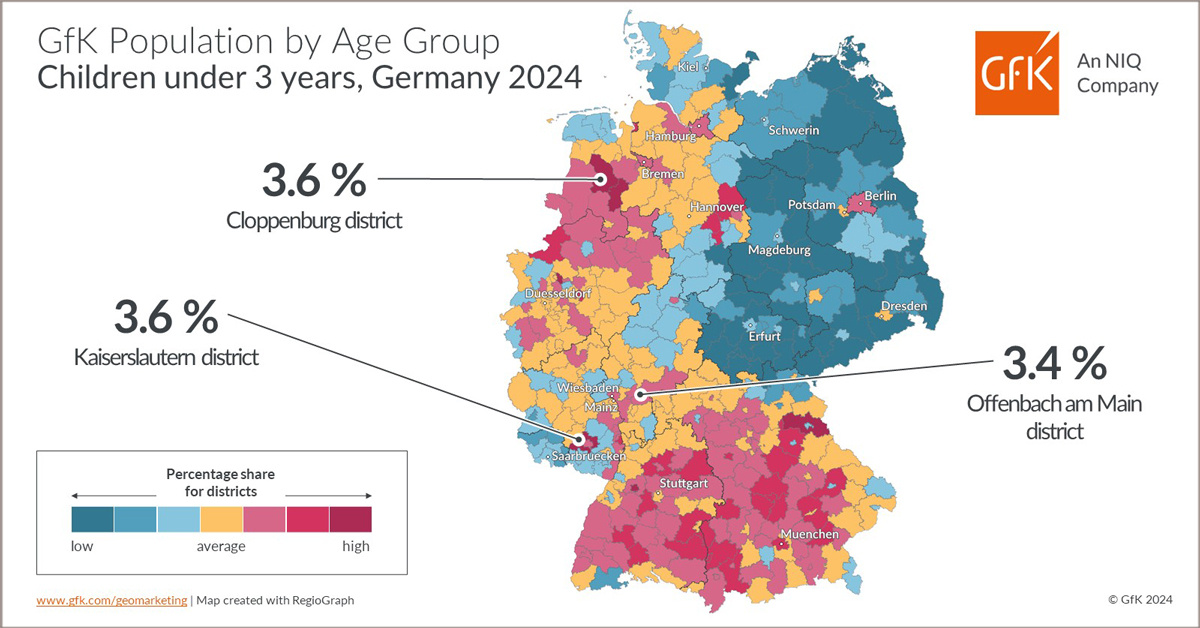GfK’s Map of the Month for May shows the regional distribution of babies and toddlers under the age of three in Germany in 2024.
According to the Federal Institute for Population Research (BiB), the birth rate in Germany is the lowest it has been since 2009. But which German regions have the highest share of children under the age of three?
The latest GfK data on population by age group shows that there is a clear east-west divide in Germany in this respect. The highest share of babies and toddlers younger than three years can be found in the western German federal states, especially in the districts of Cloppenburg and Kaiserslautern, where they make up 3.6 percent of all residents. This puts both districts more than 28 percent above the German average. Third place is taken by the district of Offenbach am Main with 3.4 percent. Bringing up the rear is the Thuringian district of Suhl: at 1.9 percent, the share of children under the age of three is more than 31% below the national average.

Download the map in high-resolution JPG format…
The map may be freely distributed and reproduced if the following attribution is included: “Illustration: GfK”.
Further insights into GfK’s market data offering can be found here.